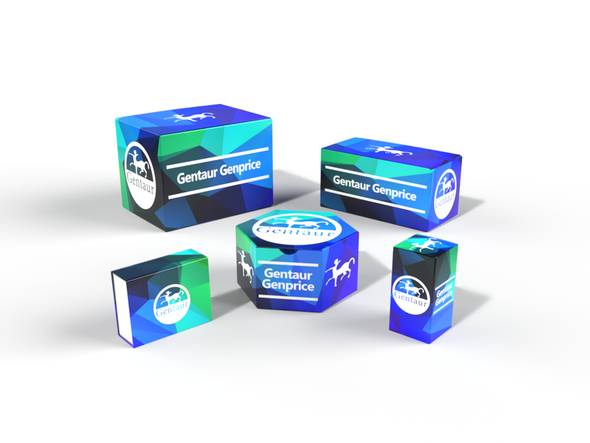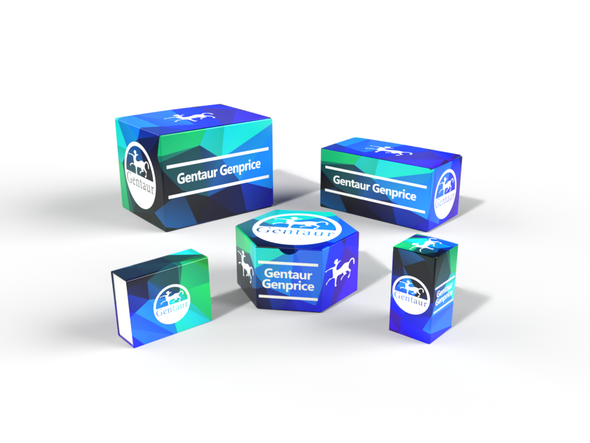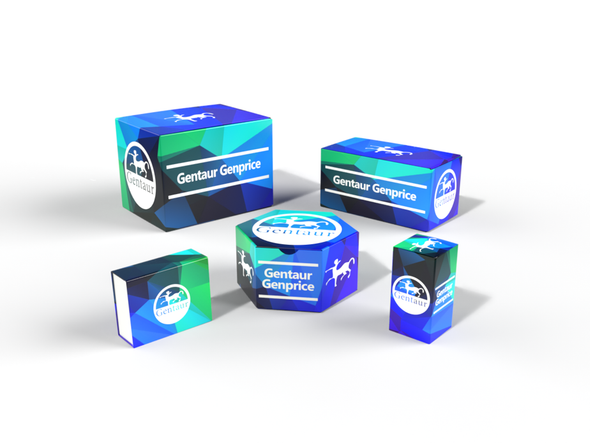Description
INTROL® Cystic Fibrosis Panel II Control
Order Number:
G110-1 contains: 3 bottles, 1 milliliter each
G110 contains: 3 bottles, 2 milliliters each
INTROL® CF Panel II Control DataSheet
INTENDED USE:
INTROL® CF Panel II Control is intended for in vitro use as a quality control to monitor analytical performance of the extraction, amplification and detection steps of test systems used in the qualitative measurement of the Cystic Fibrosis Transmembrane Conductance Regulator (CFTR) gene. This product is intended to be extracted and analyzed routinely with each cystic fibrosis (CF) test run.
INTROL CF Panel II is designed to monitor the detection of 54 CFTR mutations, genetic risk factors associated with cystic fibrosis, including the 23 mutations recommended for testing by ACMG and ACOG. INTROL CF Panel II Control also monitors variants I506V, I507V, F508C, 5/7/9/11T and I148T.
INTROL CF Panel II is provided for Research Use Only (RUO). It cannot be cloned, sold, or transferred without the explicit written consent of . Patents issued.
PRODUCT SUMMARY:
INTROL CF Panel II Control consists of synthetic CFTR DNA suspended in a non-infectious, blood-like matrix containing carrier DNA, preservatives and stabilizers The synthetic DNA contains all 27 CFTR gene exons plus intronic borders, and contains specific mutations and variants which are divided among 3 bottles (Bottles a, b, c). Specific mutations and variants present are described in Table 1. The DNA should be extracted and purified from its matrix before analysis.
Analysis of INTROL CF Panel II test results can be valuable in the detection and troubleshooting of errors associated with the sample extraction, amplification, and signal measurement phases of CF test systems.
PRECAUTIONS AND WARNINGS:
This product contains 23% ethanol (v/v) and could be flammable. Keep away from open flames.
This product is intended for in vitro analytical testing and is provided for Research Use Only, not for use in diagnostic procedures. This product does not contain any biological material of human origin.
INSTRUCTIONS FOR USE:
Extract and analyze INTROL CF Panel II Control as you would a whole blood specimen:
- Allow INTROL CF Panel II to come to room temperature (18° – 25°C).
- Thoroughly mix the solution prior to opening by inverting the bottle several times or placing on an automated mixer immediately before
- Extract INTROL CF Panel II in the same manner as a whole blood Use the same volume that would be used for a patient sample in your lab.
Note 1: Certain test methods may require additional processing of control material, such as dilution prior to analysis.
Note 2: The level of CFTR DNA present in the extracted control may not be detectable by certain quantitation methods and is not quantifiable by spectrophotometer measurements.
- Analyze the extracted DNA as you would genomic DNA. If dilutions or other preparations of the extracted DNA are required as part of the testing procedure, handle the INTROL CF Panel II DNA in the same manner as clinical
- Tightly recap each bottle after use and store refrigerated (2° - 8°C).
- Controls should be tested routinely as a matter of Good Laboratory Practice and according to guidelines or requirements of local, state, and/or federal regulations or accrediting organizations. The frequency of analysis will depend on individual laboratory policies for control use and may vary according to the analyte being measured or the analytical system being
STORAGE:
Upon receipt and after opening, the material should be stored at 2° – 8°C. Do not freeze.
STABILITY:
Unopened INTROL CF Panel II Control material is stable through the expiration date printed on each bottle when stored refrigerated (2° – 8°C). Opened material tightly capped and returned to the refrigerator (2° – 8°C) shortly after use is stable for thirty (30) days from the date of opening.
EXPECTED VALUES:
The genotype for each mutant / variant allele is listed in Table 1 below. The sequence of INTROL CF Panel II DNA has been confirmed by bi-directional sequencing. In some CF test systems, neighboring mutations interfere with expected test results. Such interferences occur with the INTROL CF Panel II just as they occur with patient samples. Thus, INTROL CF Panel II can assist the lab by demonstrating interference results to ensure correct interpretation of results.
The laboratory should follow Good Laboratory Practice (GLP) and establish its own performance characteristics for INTROL CF Panel II in demonstrating adequate system performance. Recoveries may vary depending on extraction method, instrumentation, cycle time / temperature, reagents, method variation, and other systematic or random errors.
Table 1.
INTROL® CF Panel II Control Mutations and Variants [in parentheses ( )].
| Allele | Genotype | Allele | Genotype |
| Bottle a | Bottle b | ||
| CFTRdele2,3 | Heterozygous | E60X | Heterozygous |
| Y122X | Heterozygous | G85E* | Heterozygous |
| (7T* / 11T) | 7T / 11T | (I148T) | I148T / WT |
| Q493X | Heterozygous | 621+1G>T* | Heterozygous |
| (I507V)* | I507V / WT | 711+1G>T* | Heterozygous |
| (F508C)* | F508C / WT | 1078delT | Heterozygous |
| S549RT>G | Heterozygous | R334W* | Heterozygous |
| Q552X | Heterozygous | R347P* | Heterozygous |
| A559T | Heterozygous | (7T* / 9T*) | 7T / 9T |
| 1898+5G>T | Heterozygous | A455E* | Heterozygous |
| 2307insA | Heterozygous | del F508* | Heterozygous |
| Y1092XC>A | Heterozygous | V520F | Heterozygous |
| M1101K | Heterozygous | 1717-1G>A* | Heterozygous |
| 3849+4A>G | Heterozygous | G542X* | Heterozygous |
| S1251N | Heterozygous | S549N | Heterozygous |
| Bottle c | G551D* | Heterozygous | |
| 394delTT | Heterozygous | R560T* | Heterozygous |
| R117H* | Heterozygous | 1898+1G>A* | Heterozygous |
| 711+5G>A | Heterozygous | 2143delT | Heterozygous |
| R347H | Heterozygous | 2184delA* | Heterozygous |
| (5T* / 7T*) | 5T / 7T | 2789+5G>A* | Heterozygous |
| (I506V)* | I506V / WT | 3120+1G>A* | Heterozygous |
| del I507* | Heterozygous | 3199del6 | Heterozygous |
| 1677delTA | Heterozygous | D1152H | Heterozygous |
| S549RA>C | Heterozygous | R1162X* | Heterozygous |
| R553X* | Heterozygous | 3659delC* | Heterozygous |
| 2183AA>G | Heterozygous | 3849+10KbC>T* | Heterozygous |
| 3272-26A>G | Heterozygous | 3876delA | Heterozygous |
| Y1092XC>G | Heterozygous | 3905insT | Heterozygous |
| S1255XA>G | Heterozygous | W1282X* | Heterozygous |
| S1255XC>A | Heterozygous | N1303K* | Heterozygous |
| *ACMG / ACOG Panel | |||










